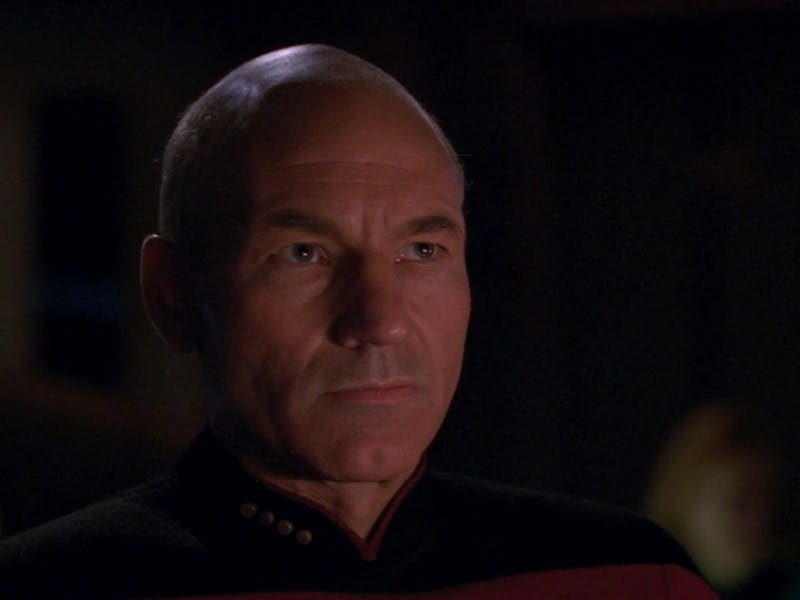Jean-Luc Picard, Automation, and the Giant Flying Gray Area
Starfleet and Tesla see transportation very differently.

Does the prospect of a showdown with Romulan warships scare Starfleet Captain Jean-Luc Picard? Nope. An attack by an invisible beast on a desolate, unnamed planet? Nah. Self-driving technologies? Absolutely. The captain’s captain never wants to hand over the stick.
The shiny-headed commander makes that much clear in Star Trek: The Next Generation Season 3, Episode 6. In “Booby Trap,” the Enterprise falls victim to a, well, booby trap, set by an unknown ancient race. Attempts to escape by warp or impulse power only strengthen the trap, holding it even more tightly. Geordie takes to the holodeck to collaborate with the computer on a solution, and, in a move we’ll dub “Pulling a LaForge,” he falls in love with its fetching holographic avatar.
“He proposes to turn total control of the ship over to the computer,” Picard tells Riker expositionally, “because it can make quicker adjustments than any human being.”
“Computers have always impressed with their ability to take orders,” Riker says. “I’m not nearly as convinced of their ability to creatively give them.”
This is from a man who leaves command of the ship to the android Data all the damn time.
As is his wont, Picard turns the conversation to the philosophical and the historical, reminiscing about how people used to use such primitive technologies as the “aero-plane.”
“Now,” he says ruefully, “the machines are flying us.”
This is probably a good place to note that this episode was never up for Emmy consideration.
Clunky dialogue aside, it does provide a window into older views of automation’s role in transportation. Star Trek would never be so reckless as to advocate for letting computers drive things, so Picard is forced to fly the ship out manually as Geordie realizes his mistake.
“The answer lies in our own computer, the mind, the best piece of engineering we’ll ever need,” he casually remarks.
In that spirit, let’s take a moment to reflect upon the wrist actions of the average Star Trek ensign upon the average order to “engage.” Do we see a complex-enough series of movements to justify this view, that computers can’t be trusted to drive the ship? Or has the ship clearly been driving itself everywhere this entire time, no matter what Geordie says?
Whether or not Picard wants to think about it as “self-driving” technology, it’s extremely clear that the ship has a number of very complicated systems that translate small movements into very, very involved processes. Is that pure automation? No. Is that pure reliance on the human brain? No. “Booby Trap” is ultimately an episode about Starfleet employees deciding that automated transport is a black and white issue while sitting in a giant flying gray area.
It’s telling about the mentality of the recent past, when people were just starting to get into the swing of automation-focused technophobia, and the idea of the inherent betterment of human skill was a point of some pride. These days, of course, the argument between human and machine dexterity and reaction time is all but settled in the other direction — but this odd little ‘90s time capsule still shows the level of push-back self-driving cars can expect from captain types in the future.
Watching it now, knowing a bit more about the arc of technological history, “Booby Trap” feels a little less about giving a computer control and a little more about how hard it is to surrender control. That part of Picard’s position isn’t outdated even if this rest of his argument is fairly silly.